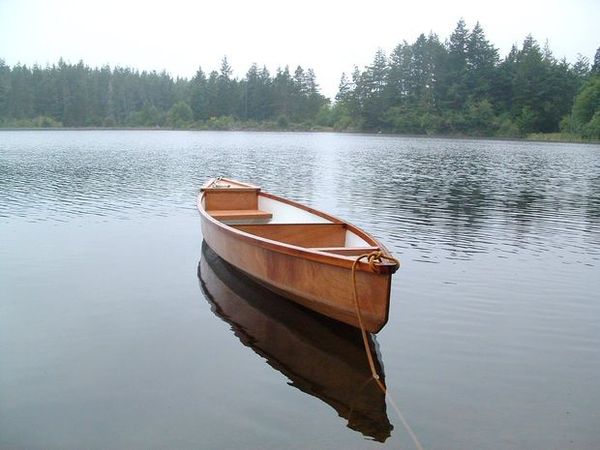
Designing and Building a Canoe for Effortless Water Navigation
Embarking on a tranquil paddling journey demands a canoe designed for seamless movement through the water. By understanding the key principles of canoe design, you can craft a vessel that glides effortlessly, responds to your commands with grace, and provides a stable platform for your adventures. Let's delve into the intricacies of crafting a canoe that prioritizes ease of handling.
Choosing the Right Hull Shape
The foundation of a canoe's handling lies in its hull shape. This intricate design element dictates how the canoe interacts with the water, influencing its stability, speed, and maneuverability.
The Importance of Hull Length
A longer hull offers greater stability and tracking ability, cutting through the water with minimal resistance. This translates into a smoother ride, especially in choppy conditions. However, longer canoes can be harder to turn.
Understanding the Role of Hull Width
A wider hull provides greater initial stability, making the canoe less likely to tip over, particularly for novice paddlers. However, wider canoes tend to be slower and less maneuverable.
The Impact of Hull Depth
A deeper hull offers greater buoyancy and stability, particularly in rough water. However, deeper canoes can be more challenging to maneuver, requiring more effort to initiate turns.
The Versatility of Hull Shape Variations
The world of canoe hull shapes offers an array of options, each tailored to specific paddling preferences. For example, the classic "V" hull is known for its speed and responsiveness, while the "round bottom" hull provides greater stability for leisurely paddling.
Optimizing Canoe Weight and Balance
The weight and balance of your canoe play a significant role in its handling characteristics. A lighter canoe is easier to maneuver and transport, while a well-balanced canoe tracks straight and minimizes tipping.
The Importance of Material Selection
Lightweight materials like cedar or fiberglass are favored for their ease of handling. However, consider the durability and longevity of each option.
Striving for Balanced Weight Distribution
Ensure that the weight of the canoe is evenly distributed. This minimizes any tendency to lean to one side, making the canoe feel more balanced and easier to control.
The Role of Seat Placement
Strategically placed seats enhance balance and control. Aim for a seat placement that positions the paddler over the canoe's center of gravity.
Implementing Key Design Features for Enhanced Handling
Specific design elements can further enhance the canoe's handling capabilities.
The Benefits of a Rockered Bottom
A rockered bottom, characterized by a slight curve in the hull, enhances maneuverability by reducing the canoe's resistance to turning. This feature is especially beneficial for navigating tight spaces.
The Role of Keel Lines
Keel lines, shallow grooves running along the bottom of the hull, provide a directional force, aiding in straight tracking and reducing drifting.
Utilizing Chine Lines
Chine lines, sharp edges along the hull, create a flatter bottom, contributing to greater stability and a more comfortable ride in rough water.
Mastering Paddling Techniques for Easy Handling
Even the most carefully designed canoe requires proficient paddling techniques to ensure optimal handling.
The Power of the J-Stroke
The J-stroke is a powerful technique for turning a canoe. By sweeping the paddle in a J-shaped motion, you can efficiently pivot the canoe without sacrificing momentum.
Mastering the Draw Stroke
The draw stroke is another essential maneuver for fine-tuning your canoe's direction. This technique involves pulling the paddle toward the canoe, creating a gentle sideways shift.
The Importance of Proper Paddle Grip
A firm grip on the paddle, close to the blade, maximizes leverage and control, allowing for precise movements and smoother handling.
Conclusion: A Canoe Tailored to Your Needs
By meticulously considering hull shape, weight distribution, design features, and paddling techniques, you can craft a canoe that glides effortlessly through the water, responding to your commands with grace. With a well-designed and skillfully handled canoe, you can unlock a world of paddling adventures, navigating tranquil waters with ease and confidence.

0 comments:
Post a Comment
Note: Only a member of this blog may post a comment.